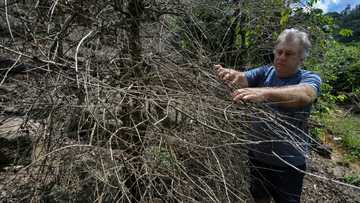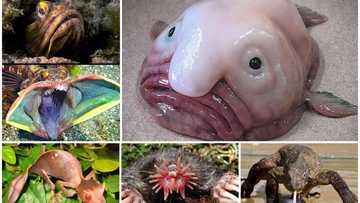Animals of the Red Book of Kazakhstan: a comprehensive list
The world is so structured that the strong crowd out the weak and the weak go extinct. It also results from natural changes and global cataclysms. About two million years ago, one of the biggest threats to animals and humans appeared. The animals of the Red Book of Kazakhstan number more than 120 species.

Source: UGC
Kazakhstan's Red Book: Rare and Endangered Animals
The list of endangered animals in Kazakhstan includes:
- Mammals - 40 species.
- Birds - 57 species.
- Fish - 18 species.
- Reptiles - 10 species.
- Amphibians - three species.
So, mammals and birds are in the most deplorable state. Their numbers are declining due to habitat loss, lack of food, and uncontrolled hunting. Some of Kazakhstan's animals, such as the kulan and Turan tiger, have gone extinct as a result of direct extermination.
Fortunately, many of the animals on the Red List can be saved if measures are taken in time. We suggest you get to know some of their representatives:
- Cheetah.
In the 18th and 19th centuries the fastest cat on the planet was regularly found in Kazakhstan. Experts believe the last wild cheetah was killed in 1964.
However, there is hope for a revival of the so-called spotted sprinter population. For this purpose, a reserve was established in Karakiyan district of Mangistau region. The plan is to breed cheetahs in captivity and then teach them to live independently.
Now Almaty Zoo is doing this. However, conditions, such as increasing the number of ungulates, must be created before releasing the animals.
- Saiga.
Once a cheetah's food, this funny-looking animal is now endangered. This small antelope inhabited large areas of the Great Steppe, but was virtually wiped out because of its inability to stand up to man. Saiga is an easy way to get nearly 40 kilograms of meat for people.

Source: UGC
After the hunting ban was introduced, the saiga population gradually increased. Of course, poaching was hindering this process, but the situation was not critical. But in 2015, the species received a new devastating blow. More than 150,000 individuals - 60% of the world population - have died from the infectious disease. Now, there are slightly more than 100,000 saiga living in Kazakhstan. This offers hope for the species' recovery.
- Snow leopard.
Because of their secretive way of life, there is still no precise estimate of the number of animals. According to rough estimates, the population of snow leopards in Kazakhstan is 150-200 individuals. The cat is under threat of extinction due to poaching and a decline in the number of mountain goats.
With luck, you can meet a snow leopard in Kazakhstan in the mountains of Dzhungarsky Alatau and Tien Shan. But this is unlikely, as the animal is active mainly at night. Three nature reserves have been established to protect the irbis in the country: Markakol, Aksu-Dzhabagli and Almaty. As an additional measure, it is planned to create a Dzhungar reserve.
- Arhar, or argali.
The largest sheep in the world. The males weigh between 180 and 200 kilograms. I joined the Red Book animal company relatively recently and am seen as a vulnerable species of parrot.
In Kazakhstan, arkhars are found in the mountains of Dzungar Alatau and Tian Shan. Its habitat also includes Saur, Karatau and Tarbagatai. Hunting of mountain sheep is prohibited in many places. But prohibitions rarely stop poachers. They are attracted by the massive archaic horns, for which they fetch more than two thousand dollars on the black market. Also a danger to the animal population is the livestock that feeds on the same grass as the archaic.
Kazakhstan's Red Book: Birds
Among the wild animals of Kazakhstan that are threatened with extinction, birds deserve special mention. The country is home to some of the most beautiful and majestic birds: peregrine falcons, vultures, pink and curly pelicans, caravans, falcons, and many others.
Endangered species include:
- Flamingo.
This graceful bird lives in Central Kazakhstan and near the Caspian Sea. It is about 1.5 metres tall and weighs 2.7 kilograms. It nests at lakes Zhaman-Akkul, Tengiz, and Chelkar-Tengiz. We have them between April and September, but their numbers decline every year.

Source: UGC
The main threats to flamingos are poaching and habitat loss. They are hunted for meat and feathers. Moreover, because of dam construction, the birds have nowhere to live. One flamingo colony can contain thousands of birds, so it cannot be said that it will disappear from one day to the next, but the rate of population decline is alarming to zoologists.
- Black stork.
Funnily enough, the bird resembles a snow leopard in its temperament. Just as secretive and cautious. This is a good sign for a creature that is in danger of extinction. The main threat is the destruction of the black stork's natural habitat: the drying up of swamps and reservoirs, and deforestation.
Except for color, the appearance of the bird is similar to that of the white stork, which is also listed in the Red Book. Black storks lock up a couple for life. In captivity, they bear grudgingly. There were attempts to cross with a white brother, but due to differences in the marriage rituals nothing worked.
- Savka.
It is a species of wild duck. The bird spends its entire life on the water, not going out onto dry land. It has a peculiar appearance: a body up to 50 cm long, weighing up to 900 grams. During the mating period in males, the beak swells and changes colour from gray to blue.
In Kazakhstan, savka was found in the central, northern and western regions of the country. Each year, the bird population declines. It's the fault of uncontrolled shooting, climate change, and destruction of natural habitats through the ploughing of shorelines.
- Golden eagle.
The largest member of the hawk family. The golden eagle has a wingspan of 2.5 meters and weighs more than 7 kilograms. Its strength is enough to kill an adult sheep or calf. But for large prey, the eagle is rarely hunted, with a menu of hares and rodents.

Source: UGC
In Kazakhstan, the golden eagle nests in the mountains of Djungarsky Alatau, Tian Shan, Tarbagatay. Over the past century, the bird population has declined dramatically. The main causes are poaching, urbanization, and pesticide use. In addition, the development of land for agriculture has a major impact on the population.
In their desire to dominate and their hunger for profit, people often do not take themselves seriously, let alone animals. Uncontrolled hunting for fun and self-assertion results in the extinction of hundreds of species of animals each year.
Unfortunately, this cannot be stopped overnight. But if at least one in three think about the fate of our younger brothers from the Red Book of Kazakhstan, life on Earth will become richer and more diverse.
Source: Legit.ng








